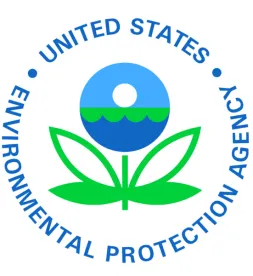On May 27, 2015, the EPA and the U.S. Army Corps of Engineers issued their final version of the Clean Water Rule, which clarifies federal jurisdiction over bodies of water under the Clean Water Act (CWA).[1] More specifically, the rule clarifies the scope of “waters of the United States”, sometimes referred to as “WOTUS,” under the CWA. The final rule will become effective 60 days after it is published in the Federal Register.
As we noted in our article last year about the proposed version of the rule, the agencies and courts have struggled to interpret the scope of WOTUS since the Supreme Court’s 4-4-1 Rapanos decision.[2] The result of that decision has often been the use of what some have criticized as an unclear and inconsistent “significant nexus” test to determine federal jurisdiction on a case-by-case basis. With the newly announced rule, however, the agencies have attempted to clarify the scope of WOTUS, in part to limit the use of the “significant nexus” test and case-by-case determinations.
Water bodies captured by the new rule’s WOTUS definition include traditional navigable waters, interstate waters, territorial seas, and impoundments of jurisdictional waters. The definition also continues to include tributaries and adjacent waters, including wetlands, ponds, lakes, oxbows, and impoundments. The agencies explained that tributaries and adjacent waters “are jurisdictional by rule, as defined, because the science confirms that they have a significant nexus to traditional navigable waters, interstate waters, or territorial seas.” The extent to which a tributary is captured, however, is to be assessed based on its specific physical features (e.g. water flow, beds, banks, and high water marks).
The final rule identifies five regional types of water bodies that should be assessed by applying a significant nexus analysis to determine if they fit the new rule’s WOTUS definition. The water bodies include prairie potholes, Carolina bays and Delmarva bays, pocosins, western vernal pools, and Texas coastal prairie wetlands. Furthermore, types of water bodies that are within the 100-year floodplain of traditional navigable waters, interstate waters, or territorial seas, as well as water bodies that are within 4,000 feet of a high tide line or ordinary high water mark of traditional navigable waters, interstate waters, territorial seas, or an impoundment or tributary should be assessed by applying a significant nexus analysis.
The final rule also creates a new uniform definition for “significant nexus.” Although the agencies explained that they relied on principles set forth by the Supreme Court when formulating the definition, the agencies elaborated that they also relied on science, expertise, and experience. Now, the term “significant nexus” means “that a water, including wetlands, either alone or in combination with other similarly situated waters in the region, significantly affects the chemical, physical, or biological integrity of a [traditional navigable water, interstate water or territorial sea]. The term ‘in the region’ means the watershed that drains to the nearest [traditional navigable water, interstate water or territorial sea]. For an effect to be significant, it must be more than speculative or insubstantial. Waters are similarly situated when they function alike and are sufficiently close to function together in affecting downstream waters. For purposes of determining whether or not a water has a significant nexus, the water’s effect on downstream [traditional navigable waters, interstate waters or territorial seas] shall be assessed by evaluating [ ] aquatic functions . . . . A water has a significant nexus when any single function or combination of functions performed by the water, alone or together with similarly situated waters in the region, contributes significantly to the chemical, physical, or biological integrity of the nearest [traditional navigable water, interstate water, or territorial sea].”
Like prior law, the final rule continues to exclude waste water treatment systems and prior converted cropland from the WOTUS definition. Moreover, the final rule codifies long-established exemptions from the WOTUS definition, including types of ditches, certain “features” related to bodies of water that are mainly created in areas of dry land such as artificially irrigated areas, artificial lakes or ponds, artificial reflecting pools or swimming pools, small ornamental waters, water-filled depressions, erosional features including gullies and rills, puddles, as well as groundwater, stormwater control features, and types of wastewater recycling structures.
Finally, although the final rule redefines CWA jurisdiction, the rule does not affect certain exemptions under the CWA. Significantly, the final rule does not influence current exemptions from the CWA’s dredge and fill permit requirements under Section 404. Likewise, the final rule does not affect any current exemptions from the CWA’s NPDES permit requirements.
[1] Final Rule, to be published in the Federal Register and on Regulations.gov in Docket No. EPA-HQ-OW-2011-0880.
[2] Rapanos v. United States, 547 U.S. 715 (2006).



 />i
/>i

